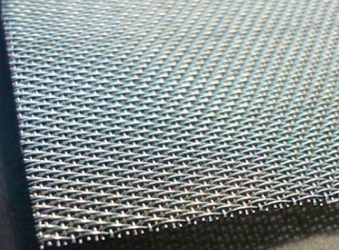Search Product
Search here for what you are looking for:

Search here for what you are looking for:

In the world of industrial manufacturing, selecting the right materials can be the key to efficiency and durability. Among these, stainless steel stands out for its strength and resistance to corrosion, making it an essential material in the production of wire mesh. Grades 304, 316, 201, and 202 of stainless steel are particularly popular, each offering unique properties that make them suitable for various applications in bulk stainless steel wire mesh manufacture. This article delves into these four grades, exploring their chemical compositions, mechanical properties, and the specific environments and applications each is best suited for. Whether you're an engineer, buyer, or manufacturer, understanding these distinctions can help in making informed decisions that optimize both cost and performance in your projects.

For the bulk manufacture of stainless steel wire mesh, grades 304, 316, 201, and 202 are commonly used, each offering unique properties suited to different applications:
304 Stainless Steel: This is the most commonly used grade, known for its excellent overall corrosion resistance. It is an austenitic stainless steel which includes 18% chromium and 8% nickel. 304 stainless steel wire mesh is ideal for a variety of applications, including those in harsh environments. It is resistant to a wide range of atmospheric environments and many corrosive media.
316 Stainless Steel: This grade includes 16% chromium, 10% nickel, and 2% molybdenum. The addition of molybdenum improves the corrosion resistance of 316 over 304, especially against chlorides and other industrial solvents. 316 stainless steel wire mesh is suitable for marine environments and applications where higher resistance to pitting and corrosion is essential.
201 Stainless Steel: As a lower-cost alternative to 304, grade 201 stainless steel contains less nickel (around 5%) and more manganese and nitrogen. It is not as resistant to corrosion as 304 but is still adequate for less demanding environments. 201 stainless steel wire mesh is often used in applications where high strength and lower material costs are an important factor.
202 Stainless Steel: This grade is similar to 201 but with the addition of molybdenum to increase corrosion resistance. However, it still lacks the overall effectiveness of the higher grades like 304 and 316 in fighting corrosion. 202 is typically used in environments where corrosion is not a major concern but where cost-savings are desired.
Each of these stainless steel grades offers a balance between cost, performance, and corrosion resistance, making them suitable for a wide range of wire mesh applications in industries such as chemical processing, oil and gas, food and beverage, and marine environments. When choosing the appropriate grade, factors such as environmental conditions, mechanical requirements, and cost should be considered.